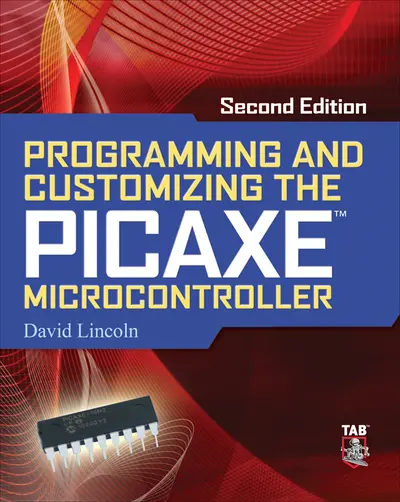My Account Details

ISBN10: 0071745548 | ISBN13: 9780071745543

Step 1 . Download Adobe Digital Editions to your PC or Mac desktop/laptop.
Step 2. Register and authorize your Adobe ID (optional). To access your eBook on multiple devices, first create an Adobe ID at account.adobe.com. Then, open Adobe Digital Editions, go to the Help menu, and select "Authorize Computer" to link your Adobe ID.
Step 3. Open Your eBook. Use Adobe Digital Editions to open the file. If the eBook doesn’t open, contact customer service for assistance.
Publisher's Note: Products purchased from Third Party sellers are not guaranteed by the publisher for quality, authenticity, or access to any online entitlements included with the product.
UNLEASH THE POWER OF THE PICAXE!
The PICAXE is a powerful and easy-to-use processor, capable of highly sophisticated projects, without the complexities and high costs of alternative chips. Beginners can produce tangible results within minutes, and experienced users can achieve truly professional results. Programming and Customizing the PICAXE Microcontroller, Second Edition, has been fully updated for the latest hardware and software upgrades, and shows you, step by step, how to take full advantage of all the capabilities of the PICAXE and build your own control projects.
This practical guide is packed with helpful illustrations, detailed examples, and do-it-yourself experiments. Perfect for beginners and students, the book also contains advanced information for more experienced programmers, hobbyists, manufacturers, and research institutions.
Programming and Customizing the PICAXE Microcontroller, Second Edition, covers:
- PICAXE architecture
- The latest chips, including M2, M, X, XI, and X2 series
- Windows, Mac, and UNIX platforms
- Interfacing and input/output techniques
- BASIC programming and compilers
- PICAXE arithmetic and data conversion
- Dozens of ready-to-run projects
- Useful routines to plug into your own designs
Hands-on projects include:
- LED and LCO display control
- Motor control
- Water detector
- Bipolar transistor output driver
- Interfacing MOSFETs to a PICAXE
- Radio-control servo motor
- Infrared wireless links
- Telephone intercom
- Dual-temperature display
- Radio frequency identification (RFID) reader display
- Memory and I/O expansion
- Real-time clock/calendar
- Data logger
- Robotic components
- Many more
Need support? We're here to help - Get real-world support and resources every step of the way.
